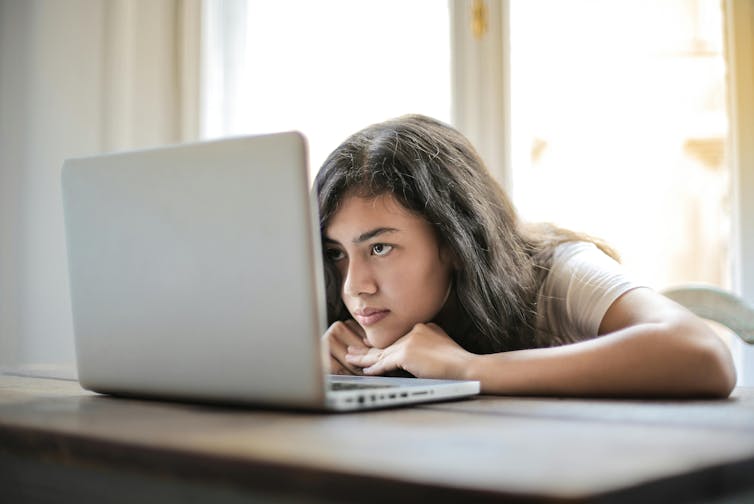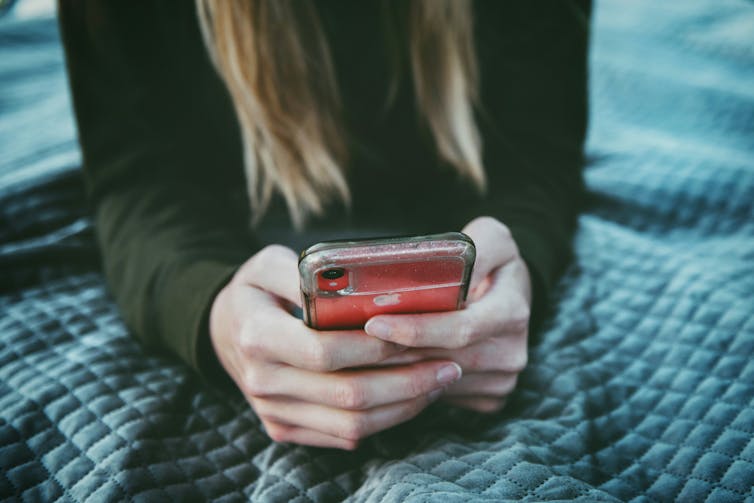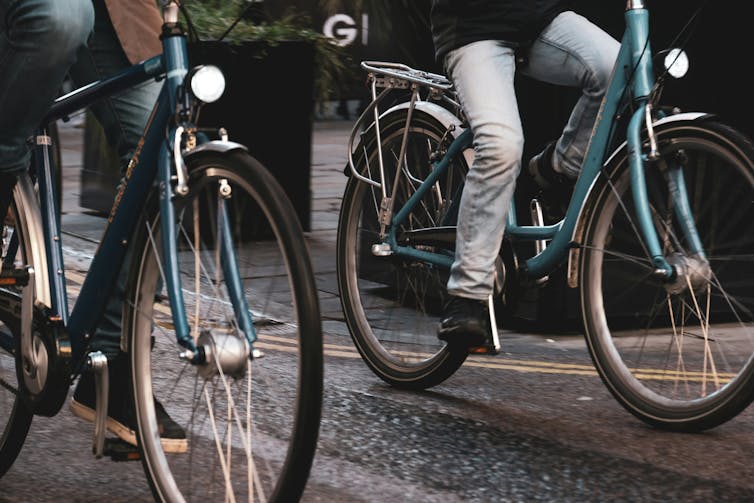Many parents are worried about how much their children use social media and what content they might encounter while using it.
Amid proposals to ban teenagers under 16yrs from social media and calls to better educate them about being safe online, how can you tell if your child’s social media use is already a problem? And what steps can take to help if there is an issue?
It is easy to get hooked
These platforms are designed in a way that releases dopamine (the “feel-good” hormone) for users. This can make it especially difficult for adolescents to resist.
As psychologists explain, from the onset of puberty until the mid-20’s, our brains are hypersensitive to social feedback and stimuli.
This means young people are more likely to engage in behaviours that can lead to praise or attention from peers and others. So it can be harder for a young person to resist responding to notifications or “likes”. Young people also are developing their impulse control, which can have implications for their scrolling habits and make it harder for them to stop.
There are benefits and risks
There are certainly many benefits to social media use, such as social connection, information and support. But there are also risks.
Although it is not necessarily causal, there are links between social media use and depression, anxiety, stress, sleep disorders, many aspects of cyberbullying and body image issues.
So it is understandable if parents have concerns about their children’s use of platforms such as TikTok, Instagram or Snapchat.

Are we talking about a ‘problem’ or an ‘addiction’?
Often terms such as “problematic” and “addiction” are used interchangeably when talking about social media use.
But there is no consensus among experts about how to differentiate between them or even if they should be differentiated.
Although some researchers argue social media addiction presents in similar ways to other behavioural addictions such as gambling, it is not recognised as a clinical disorder.
We need to be careful about referring to social media use as a clinical disorder or addiction. It can be more helpful to use terms such as “problematic” or “unhealthy” until we know more.
Is there any advice on how much time is OK?
Australian guidelines suggest children and young people between five and 17 should spend no more than two hours of sedentary recreational screen time per day (not including school work).
But as the eSafety Commissioner notes, there is no “magic figure”. It depends on a range of factors such as a child’s maturity and age, the type and quality of content they are consuming and if it involves watching alone or with a carer.
There are no specific guidelines around social media use.
How can you tell if there’s a problem?
Keeping track of what teenagers are doing online can be very difficult, especially if they have their own devices.
So it means parents and carers will have to carefully consider their own child’s situation and behaviour to work out if there is a issue. Things that can suggest a young person’s use of social media has become a problem include:
withdrawing from, or missing out on usual activities to spend time on social media
finding it hard to stop or reduce the time spent on social media
lying about or trying to cover up their social media use
continuing to use social media even if it is causing problems with their real life relationships or other areas of life (such as school, work or sport).

What about problematic content?
On top of time spent on social media, problematic use can also relate to the kinds of content a young person is being exposed to. This can include content which shows or promotes risky behaviours or violence, extremist views, pornography, gambling opportunities, graphic videos, fake news or mis/disinformation.
This can be very easy to access. As a US Surgeon General’s advisory notes, inappropriate content is even directed towards young people through algorithms.
If your child has come across inappropriate or concerning content, they may not want to talk about it or tell anyone because they may be embarrassed, confused or scared.
What can you do if you think there’s a problem?
Try to approach a conversation with your child in a sensitive way. Assure them you are here to help and not “get them in trouble”.
Thinking about your own social media use can be a useful starting point. Research suggests adolescents are more likely to have problematic internet use in general when their parents also have problematic use. Are your own habits consistent with what you want for your child? Do you have time-out from social media?
You and your child/young person could have a discussion about how you could both commit to changing your behaviour as a family. Perhaps this means no social media after a certain time of day or only at certain times of the day.
Involve your kids in change, do things offline
Even if your own habits are OK, it is important for young people to be involved and consulted about what will work for them, rather than an outright “ban” or imposed change. This gives them a sense of ownership of the solution (and makes them more likely to participate).
Research also suggests having regular, positive family time together can help foster time away from devices and problematic use. So organise things that fit with your child’s interests and can be done offline. For example, board game nights, hikes, bike rides or meals.
Young people also often seek help and information about problems through other trusted adults and peers. So if you can, encourage them to talk to their friends or a teacher at school about what they do to manage social media use.

Other resources
Problematic social media use is a complex issue. And it needs involvement from the broader community, not just families and carers. Any solutions will also need to actively involve young people and social media platforms themselves.
If your child/young person is demonstrating problematic use, and you would like more specific support, contact a counsellor or mental health professional.
There are also other resources that may help, including:
general advice to parents on what social media is and why young people use it, from youth mental health organisation ReachOut
advice to young people if they feel pressured by social media from the eSafety Commissioner
advice to parents about social media use from the federal government’s Student Wellbeing Hub
advice about the law and social media and what to do if you get into trouble from Youth Law Australia
advice to young people about how to protect their mental health on social media from Kids Helpline.

